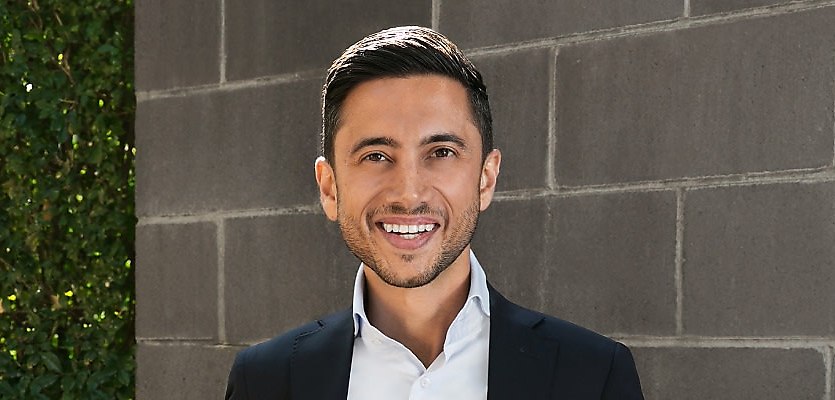Alex Jordan has been Queensland’s top agent for three consecutive years, but success wasn’t served to him on a silver platter. He detailed his struggles and how he reversed his fortunes.
McGrath Estate Agents’ sales agent Alex Jordan has placed first in the REB Top 50 Agents Queensland 2023 ranking, and 19th in the Top 100 Agents 2023.
Mr Jordan sold 134 properties during the 2022 calendar year for $290.4 million, up from the 130 properties valued at $246.1 million in 2021.
He primarily sold houses in the mid- to high-end portion of the Brisbane market, with an average sale price of almost $2 million to families moving there for school catchments.
While he sold properties for $6.5 million and over, Mr Jordan said there is less volume of transactions in that price range.
However, Mr Jordan did not always enjoy this track record of success throughout his career, which has spanned almost 24 years so far. Indeed, he remarked, he had been in the real estate industry for almost 12 years before seeing positive results.
“I questioned whether real estate was the right industry for me and almost gave up many times throughout my career, especially in 2011,” Mr Jordan said.
“I’d been at it for 12 years at that point and I hadn’t seen much success, and I was struggling financially. I looked for other jobs but luckily, I didn’t find any. If I had, I wouldn’t have had the opportunity that I currently do.”
Besides persisting and working hard, Mr Jordan realised his business model was “all wrong” for many years and required an overhaul.
Detrimental to his career was attempting to capture a very broad market across four suburbs and over 20,000 homes.
After joining McGrath, he recounted, he noticed that other agents were achieving larger sales values despite selling fewer properties.
“They were doing with 1,200 properties what I was trying to do with over 20,000 properties,” he said.
“So, I narrowed it down from four suburbs and 20,000 homes to a quarter of one suburb and about 770 properties. It was a very nice higher-end section of the suburb with a golf course.”
Alongside this, Mr Jordan said he employed a consistent marketing strategy by producing higher-quality content and communicating regularly with clients.
This included frequent letterbox drops, knocking on doors after achieving a listing to persuade neighbours to attend open homes, and collecting testimonials and reaching out to journalists if a sale outcome was positive.
He also utilised social media and geographically targeted marketing in his chosen area to increase visibility, he said.
Mr Jordan’s new business model yielded results, with his market share increasing from zero to 68 per cent within 18 months in 2014.
Once he had his foundation in place, Mr Jordan grew his team and used a similar formula for neighbouring suburbs by scaling his business model, he explained.
“In this industry, the aim is to have an attraction business and have the consumer contact and ask for an appraisal,” Mr Jordan said.
“After ironing out a process, you then go in and get the enquiry directly. But by trying to capture too big a market, I was doing it wrong for so many years.”
Pivoting his business model was psychologically difficult and uncomfortable because Mr Jordan feared missing out on other properties outside his chosen area, he said.
“I had a scarcity mentality, where I thought if I only focused on 1,000 homes, I would never reach the 19,000 vendors who might want to sell,” he said.
“But I now have an attraction business where the client calls me and I’m the compelling agent in that area. I’ve managed to get dominant market share in that small patch.”
New agents must understand their data
Mr Jordan advised newer agents to understand their statistics, the type and number of properties they should target, and the number of transactions they want to complete per annum.
Agents should then back test this for at least five years rather than one year, accounting for year-to-year fluctuations, he said.
“A lot of agents have an idea about where they want to get to, but they lack direction,” Mr Jordan pointed out.
“When we ask them about it, they say they don’t know how many properties or transactions they’re aiming for or what’s out there. You’ve got to have a decent enough area that’s going to give you the business you want before you start working.
“If it’s too small, you’ll have a low average sale price, and selling 1,000 homes may not be enough. If you’re targeting a very high-end area where the average sale price is $2 million, you can create a very strong business.”
Mr Jordan also encouraged agents to calculate their total GCI potential and how much market share they could realistically achieve within a two-year time frame.
He concluded: “Get to know what you need to make this career work, and then be dominant. Be visible. Visibility is crucial. Provide market reports and statistics in your area. Become the intelligent source of information for your clients.”
Click here to view the REB Top 50 Agents Queensland, and Top 100 Agents 2023 rankings.







You are not authorised to post comments.
Comments will undergo moderation before they get published.